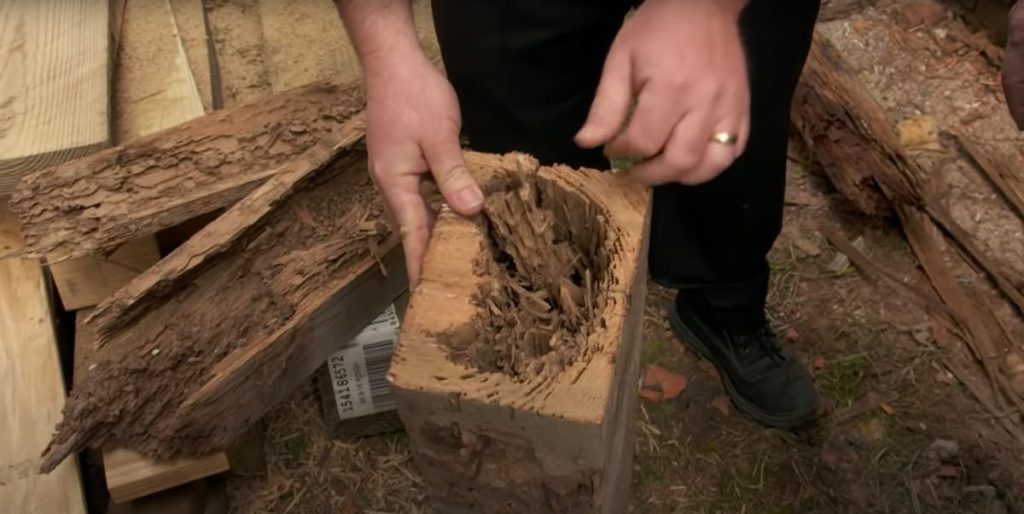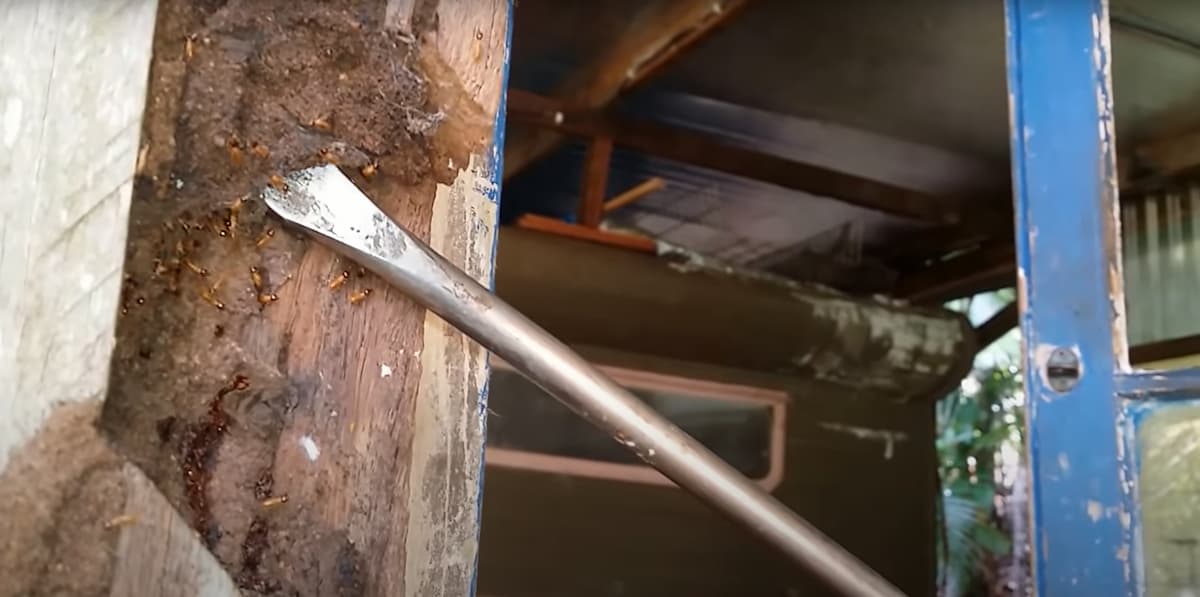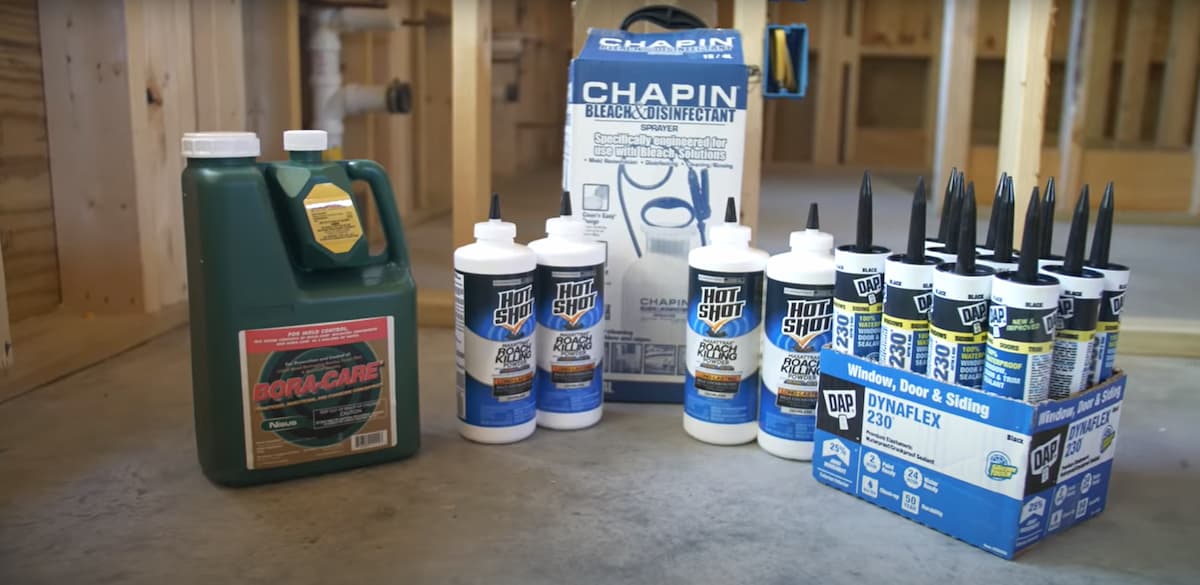While termite control may appear to be expensive to some, if not done appropriately, these tiny pests may cause significant property damage and repair expenses of thousands of dollars. Termites can eat non-stop, and their worldwide economic impact is estimated at more than 300 billion dollars and over 100 million in Australia. There are various types of termite treatments on the market, each tailored to a certain kind of termite and your own home’s specificities.
A termite colony is one of the most difficult pests to treat and control. Unfortunately, termite infestation has infested 1 in 4 houses on the sunny coast of Australia. When it comes to treating and managing termites, there are two options:
- Do it yourself
- Hire a professional
The most common question that homeowners have is what could a termite barrier cost? This post explains why Termite Treatment Costs could vary.
What is a Termite Barrier?
Let’s get one thing straight before we go into the specifics of pricing, a termite barrier is not, in most cases, a physical barrier. It’s typically not a fence or anything like that. The termite barrier is simply a trench around your property’s perimeter where an insect repellent is applied.
A termite barrier is a chemical or physical barrier that prevents termites from entering the home. A simple way to prevent termites is to use baseboard pest-proofing, borax powder (if you want an eco-friendly method) or even poison in order to create a line of defence at the base of your foundation walls. Termites that enter this area consume the substance and distribute it to other termites, wiping out the colony. However, Termidor is one of the most well-known chemical treatments.
Termite barriers are only one part of a larger process. Termite barrier cost can vary depending on inspection costs, location factors, etc. For example, Tasmania has different treatment methods compared to Brisbane have different treatments compared to Suburbs in Melbourne have different treatments options too.
Termite Pest Control Barrier Types
The most popular termite barrier is a chemical one, often known as a chemical barrier. The following are the three primary types of termite barriers:
- Reticulation termite barrier. This is a more cost-effective and recent approach. A pipe is installed at the bottom of the trench, with tiny holes in it that release the repellent. Refill points are available at set intervals, making refills simple. This is a type of chemical barrier.
- Baits of Termite Control. Each three metres, termite bait is set that contains an enticing. The majority of the time, the bait is a circular cylinder with a substance within that simulates the decomposition of wood to attract termites. The bait may be replaced on a regular basis.
- The most important area to look for are the walls. The idea is that if you can get the bugs out of one room, they’ll come in and infest the next. Commercial-style doors with a metal clasp or knob may be used to keep pests out entirely. If a bug does manage to get inside, it’s easy prey. There are several varieties of termite entry points found on homes around the world. Pesticides called neurotoxins have been proved extremely efficient against termites in laboratory settings and show promise as biopesticides because they disrupt communication between colony members while their bodies are still alive (nephrops lethifera).
A termite barrier is not the same as a termite treatment. A spray is used to destroy an existing colony of termites. The termite barrier is a preventative action that ensures no colony enters your property in the first place. The cost of a termite barrier, which entails making architectural modifications around your house, is far greater than that of treating existing infestations.
Termite Barrier Price
For a period of up to 8 years, termite barriers are utilized to keep the property free of termites. They include trenching around the perimeter of the house and drilling tiny holes through external pathways and slabs to form a complete treated zone that encircles it. It’s important to know how much does termite treatment cost.
The cost of a Termite Treatment Barrier may range from $2,000 to $3,500 for a small to a large home. If termites are present in your house, option 1 treatment is usually included. Optionally, barrier chemicals may be used that is intended to destroy the termite nest by transporting product back to the nest.
If a repellent chemical is utilized, the termite treatment cost for a barrier may usually be $500.00 less. This isn’t advised because it won’t make its way back to the nest. The average termite barrier cost is around $3,000 for a decent-sized home that adds maximum termite protection. Make sure you avoid cheap termite treatment inspection and treatment.
What is Termite Treatment?
Termite treatment is the most cost-effective and efficient way of ridding you of termites today. Treatment involves trenching around your house and injecting a liquid chemical into the soil which makes its way to each colony in your home, eliminating them. The chemical dries quickly and leaves no evidence of entry points or chemicals left.
It’s a good idea to get a chemical termite barrier treatment placed around your house for termites. This is because it can actually help you, rather than something that won’t work. The initial cost of a chemical barrier against termites may be high, but the lack of future costs and infestations is truly worth it. The chemicals used in such cases are not toxic to mammals and do not affect non-ingestible items such as plastic or glassware.
Sometimes, they consist of solid products such as sheet metal or wood trimming covered with the repellent whereas other times they apply liquids treated into the soil next to and surrounding buildings and other structures. Termite treatment service providers usually give one-year warranties on their jobs.

Termite Treatment Cost
The cost of termite treatment is determined by the size of your house, whether or not termites are present in your house at the time of service, and the extent of protection you desire. Termites are social insects that live together in large colonies.
A chemical barrier against termite entry typically costs between $2,000 and $3,500 for a small to medium-size home. Adding insecticide injections to the barrier increases its cost by about $1 per linear foot for each additional injection point.
Termite barriers vary in price depending on the chemicals used, how much soil needs to be treated, and how long you want them protected. The average cost for a 3m wide x 6m long x 0.5m deep barrier is:
- $950 for a chemical-only treatment
- $2,700 for a chemical and insecticide treatment
- $4,150 for both treatments plus an extended warranty.
Termite Treatments Cost
The price range of termite barriers starts from $6,000 to $10,500 depending on the size and style of your house. If you have water-sensitive areas such as swimming pools or heavy ground covers such as grass or flower gardens, this is where the higher cost comes in because more work needs to be done to treat these areas without impacting them.
A termite inspection typically costs between $200 and $300. This varies depending on whether there are visible signs of an infestation present already. A thorough inspection requires larger chunks of time than a quick on-the-spot check. Additional fees like travel expenses may be added to the total price. This is why it’s important to get more than one estimate before committing yourself to use any specific company.
Termite treatment cost depends on a few factors, such as the size of your home, whether you have an infestation, and how extensive the protection you want. Your best bet is to get several estimates before making any decisions. A termite inspection typically costs between $200 and $300, additional fees like travel expenses may be added to this total price.
Factors that Increase Termite Barrier Treatment Cost
The cost of termite barrier installation in Newcastle is determined by a variety of factors. The following are some examples:
- Provider quality. Costs may generally be greater with better providers. These are businesses that have been in operation for a long time and provide comprehensive warranties on all services. However, make sure you do your homework since sometimes lower-quality firms may charge more to seem more reputable.
- The larger your home is, the more solution may be required and the more labour may be needed to dig the trench.
- The termite chemical agent is not free. If you choose a non-repellent solution rather than a repellent solution, for example, you’ll pay around $500 more for the termite barrier. One reason for this is that non-repellent solutions are far more effective.
- Burglar-proof window films are the most common type of barrier. Some barriers are more costly than others. Termite baiting is generally more expensive and needs greater attention than a normal barrier, but it may be necessary for certain situations. Those with concerns about using chemicals around the house and who want to preserve the environment may benefit from termite baiting.
When to Get a Termite Treatment
Termites are typically discovered months after they begin their demolition job. If you see any of the indications listed below on your home, you could contact a professional pest control firm and schedule a termite inspection:
- Termites, flightless and fallen wings
- Clicking noises on your walls or ceiling
- When hit, this wood makes a hollow sound.
- Timber doors or windows that are difficult to open
- Water damaged paint that has yet to be entirely removed
- Powdery droppings are found on the surface of the timber.
Other Types of Pest Control
The termite barrier is the only real option. Because they are considered to be the most harmful pest in Australia, you may install a termite barrier. However, there are several things you may do to improve and maintain your termite barrier while also keeping out termites and other pests.
As much as possible, seal all cracks and openings in your home to prevent insects from entering. Keep trees and other plants away from your home, as well as stacks of wood next to your walls. All open areas could be sealed, and you may want to get a pest inspection to identify any potentially vulnerable spots where pests might enter. If your wood is strong and your house is properly insulated, there shouldn’t be a problem.
It’s never too soon to start thinking about termite control. Consider the following steps if you have a termite problem:
- Allow several feet between shrubs or vegetation and your home.
- Maintain humidity at a minimum and check for dampness. While there are many types of termites, wet wood is what attracts the most destructive kinds.
- Inspect the wood products or furniture on a regular basis. If you pay attention, termites may usually appear.
- Check the lawn and garden on a regular basis. Termites have massive colonies. You could be able to see them throughout your house.
- Spray the wood with termite-resistant chemicals if at all possible when doing any type of DIY project.
- To guarantee your own security, conduct frequent termite and pest inspections. Nothing can compare to the expertise of a professional.
Remember that termites are intelligent. Don’t interfere with their activities if you discover them. If they are disturbed, they may migrate to new areas of the home. Instead, contact a professional right away.
Termite Barriers, are they Worth it?
Yes, and for a variety of reasons. To begin, you’ll need to purchase one in order to sell your house. An infestation may result in tens of thousands of dollars worth of structural damage. Finally, a licensed and qualified specialist may provide you with a warranty and peace of mind. Although it may be costly, there is no other viable option and termites are undesirable pests that may be eliminated.
To make termite barriers really worth the money, you’ll need to work with a high-quality supplier that knows how the process works. The quality of the installation is critical. Every 10 litres of every lineal metre, the chemical solution may be sprayed, and drill holes could not be more than 200mm apart. In addition, Australian standards may be followed during installation.




